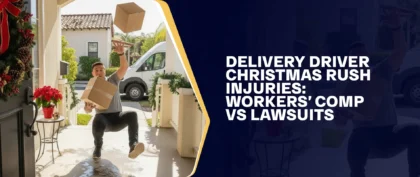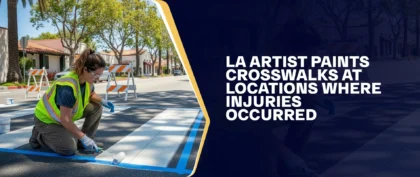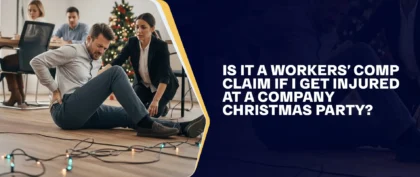Table of Contents
Remember that bicycle safety for kids starts with guided supervision. Parents and guardians are responsible for teaching them how to stay safe and avoid bicycle accidents, ensuring they enjoy their biking experience.
Riding bikes is fun and an important milestone for every kid. It’s a cherished childhood activity that offers excitement, adventure, exercise, and a convenient mode of transportation. Letting your child ride a bike allows them to enjoy outdoor adventures, travel to school, visit friends’ homes, and explore their surroundings. For millions of kids, bicycle rides provide freedom and fun.
However, many parents worry about its risks. A common concern is, “How do I keep my child safe on a bike?” Regardless of the activity’s nature, safety precautions must be taken, from choosing the right bike to teaching your kids how to ride one safely. By providing your child with the necessary knowledge and safety gear, you can help them avoid road accidents.
Why Is Bike Safety Important For Children?
According to the U.S. Consumer Product Safety Commission (CPSC), bicycle accidents are the leading cause of unintentional injuries among children between five and fourteen years old. A study by the CPSC shows that while more kids wear helmets for protection, around 300 children die, and 400,000 go to the ER due to bike injuries each year.
One critical factor highlighted in the study is the use of bike helmets. Helmets reduce the likelihood of head injuries by as much as 85%, preventing serious complications that could lead to death. This is only one example of how emphasizing bicycle safety for kids can help reduce road casualties.
Recent kids’ bike accident statistics further highlight the importance of safe riding practices among children. In 2021, children aged 14 years old and younger accounted for 38 pedal cyclists killed and 5,137 more injured in traffic accidents. These figures have slightly decreased from 2020, which recorded 48 fatalities and 5,184 injuries in the same age group.
The decline can be attributed to the increased emphasis on bike safety for children. Still, more initiatives are needed to promote safe riding. Children remain less experienced and more vulnerable on the roads compared to adults.
Parents play a crucial role in teaching safe riding practices, which, in turn, helps create safer biking communities. Additionally, bike safety instills respect for the road at a young age, helping them make the right turn when they’re old enough to drive.
How Do I Teach My Child To Ride A Bike Safely?
These bike safety rules for kids are a lot to take in for a young child who’s excited to ride their bike with friends. It can take some time for children to absorb these lessons and their importance. It will take a lot of patience on your end, but here are some tips to make it easier for you to teach your child the rules of bicycle safety:
Choose A Good Location
Child bike injury prevention is critical. You should start with the basics and practice in a controlled environment, like a driveway or park, before letting your kids bike along busy streets. This controlled setting helps them build confidence and learn essential skills without the added dangers of traffic.
Make Every Moment A Teaching Opportunity
Bike safety lessons don’t have to be confined to the parking lot or the park. You can incorporate lessons into everyday activities, such as during walks. For example, you can educate your child on street signs you see while walking around the neighborhood. This will help them recognize and understand these signs when they’re riding their bikes.
When driving, ask your child to identify potential hazards and suggest solutions. Encourage them to think critically about their surroundings. Ask questions they should consider while riding their bike, such as, “Is there a car pulling out of the driveway up ahead?” and then follow up with, “Can they see us?” Other questions could include, “Am I riding too close to another motorist?” or “Is there a car behind us? Can I safely turn at this point?”
This practice helps them develop awareness and decision-making skills, which are integral to their safety on the road.
Model Good Behavior
You might not realize it, but kids learn a great deal by watching you more than they let on. Practice what you preach: wear a helmet when biking, stop at red lights, and walk your bike when crossing streets.
This principle also applies when you’re driving. If you frequently take risks while behind the wheel, your child will likely imitate that behavior. A child learns proper conduct by observing everything you do. Reinforce the importance of safety and responsibility to your child by setting a positive example.
Be Patient When Teaching
Teaching children to ride a bike requires patience, as each learns at their own pace. Some kids find their balance more quickly than others, so adjusting your pacing to match your child’s learning abilities is important. Remember that riding a bike is primarily a fun activity for them, and they might not always focus on your instructions.
Children can easily get distracted by various things. That’s just how their curious minds work, so it’s no use punishing them. Instead, work on positive reinforcement. If they do something right, praise them.
If they’re not listening, calmly stop and reiterate your instructions. Be prepared to repeat yourself frequently, but avoid raising your voice or showing frustration. This can make learning traumatic for your child, instead affecting their ability to process new information and be confident on the road.
Get Older Children In On It
If your child resists learning from an adult, enlist the help of older siblings, cousins, or other children to guide them. Peer influence can be powerful, and learning from someone closer to their age can make the lessons more relatable. However, ensure you or another adult is always present to supervise.
Be Firm
They must know there are serious consequences if they don’t follow the rules. For example, breaking a rule means they won’t get to ride their bike the next day. This is particularly crucial for kids going through puberty, who often feel pressure to fit in with their peers. Some might think wearing a helmet is “uncool” when their friends aren’t wearing one.
However, you should stand firm on your rules, such as wearing safety gear, which should be non-negotiable. For example, let them know that if they don’t wear their helmet, they won’t be able to go out with their friends.
Whatever consequence you decide on, follow through. Consistency is key; otherwise, they won’t take you seriously next time.
Sign Up Your Kid For Bicycle Education Classes
Look for local classes that teach kids safe bicycle riding skills. Many organizations offer valuable resources and programs to enhance your child’s understanding and skills. Some examples are:
Have Fun With Your Child
Make learning fun! Do some engaging bike safety activities for kids.
SABA has some excellent resources for bicycle activities that you can use to help them improve their skills without getting bored. Here are some creative ideas to try with your kid:
- Street Design — Use chalk to draw a street layout on the driveway and print street signs. Let your child practice navigating the course while following the signs. This activity helps them learn and pay attention to traffic rules while riding.
- Hula Hoop — If your child has mastered the basics, help them improve their control and precision with this activity. Place a relatively tall object, like a chair, that fits nicely inside a hula hoop in the middle of a chalk-drawn circle. Adjust the width of the circle as needed. Then, have your child ride their bike while holding the hula hoop and try to toss it over the object without going inside the circle.
- Slow Race — Want your kid to perfect their balance? Draw a 4-inch wide line over a long stretch, incorporating curves or a figure-eight pattern. The goal is to ride from one end to the other as slowly as possible without putting a foot down. If their foot touches the ground, they must start over. The slowest rider wins.
Feel free to adjust these activities or make up your own. By making the learning process entertaining, your child will associate safety with positive experiences. They’ll look forward to these sessions and quickly develop their riding skills.
We understand that parents naturally have concerns about bicycle safety for kids. Despite your best efforts to keep them safe, accidents can still happen while biking or engaging in other activities. It’s important to prepare them for unexpected situations, including potential bicycle accidents caused by someone else.
The Basics Of Bicycle Safety For Kids
As adults and parents, you must help your child develop a mindset of caution about the unpredictability of traffic conditions, especially in urban environments. We should promote a proactive approach to bike safety for kids by emphasizing the importance of following safety rules, particularly while sharing the road with motor vehicles.
Bicycle safety for kids requires attention to several key components, including:
- Proper equipment or gear.
- Ability to ride a bicycle responsibly.
- Pre-ride checks and maintenance.
- Knowledge of traffic laws and road hazards.
These can significantly reduce the risks associated with cycling, including traffic accidents involving children. By taking time to learn all these aspects, you can help your child enjoy a safe and fun biking experience.
Important Bicycle Safety Laws To Keep In Mind
The United States fully supports the transition to cycling as a more economical and sustainable form of transportation. California, in particular, has a project called the Community Pedestrian and Bicycle Safety Training program to improve walking and biking safety. States and local governments also implement rules and regulations to enhance cyclists’ safety.
Here is a quick summary of bike safety laws for kids:
- Helmet Use — Some states have laws requiring people of all ages to wear helmets while cycling. Others, like California (under Vehicle Code Section 21212), only require anyone under 18 to wear one.
- Sidewalk Cycling — Bicyclists are generally allowed to ride on sidewalks. Local municipalities, however, may regulate this activity, especially in busy pedestrian zones.
- Bicycle Lanes — When available, cyclists should use bike lanes to separate themselves from larger, faster-moving traffic. Staying within designated areas provides protection, particularly for young cyclists.
- Bike Equipment Requirements — Bicycles should have certain safety features, such as brakes, lights, and reflectors.
- Capacity — A bicycle should not carry more people than it was designed for. A bike with one seat is for one person only.
These guidelines create a foundation for safe cycling practices, emphasizing the importance of wearing protective gear and following traffic regulations. Adults, especially parents, should be aware of these laws to protect their kids from bicycle accidents.
How To Choose A Helmet That Is Right For Your Child
One of the most important safety rules in cycling is wearing a properly fitted helmet. Choose a size that fits your child’s head correctly. A helmet that’s too tight or too loose won’t offer the necessary protection and can increase the risk of accidents. Always do the Eyes, Ears, and Mouth test based on the National Highway Traffic Safety Administration’s (NHTSA) helmet safety guidelines for kids:
- Eyes — The helmet must sit level on the child’s head and rest low on the forehead. When your child looks up, they should see the helmet’s rim, about one to two finger widths above the eyebrows.
- Ears — When buckled, the straps should form a “V” shape under their ears. Adjust them so the helmet doesn’t rock forward, backward, or side-to-side. Choose a smaller helmet if it still does, even after tightening the fit to the maximum.
- Mouth — The helmet should hug their head when they open their mouth wide. If it doesn’t pull down, that means it’s still loose. Tighten the straps and test again.
Additionally, the helmet must meet the CPSC safety standards. Confirm by looking for the certification sticker inside the helmet.
Tip: Let your child pick their helmet. If they choose one they like, they’ll be more likely to wear it every time they ride.
Not Any Helmet Will Do
Helmets designed for other activities, such as football or skiing, are unsuitable for biking. Always choose a helmet specifically designed and certified for cycling.
Helmets Are A Must, Even On Short Rides
The helmet must be on for every ride, no matter how short the distance. Accidents can happen anywhere, not just on busy streets. Many bike crashes happen close to home. All it takes is one negligent individual or driver to cause a biking accident, so your child must always remain protected.
Requiring your child to wear a helmet on every ride also helps them develop this habit. This will make them more likely to keep it on when they’re out and about.
Here’s another tip: If your child resists wearing a helmet, point out that some athletes have to wear them, too.
How Do Helmets Protect Children On Bicycles?
Bicycle helmets protect children from hitting their heads directly on asphalt, concrete, or metal objects if they fall from their bikes or get hit by a reckless driver. The helmet absorbs the impact, reducing the risk of traumatic brain injuries (TBIs), coma, and even death.
Other benefits of letting your kids wear helmets include the following:
- Distributes Force — A helmet spreads the force of impact over a large area, lessening the stress on any single point of the skull.
- Prevents Penetrative Damage — The hard outer shell of a helmet can prevent sharp objects from penetrating the skull.
- Reduces Rotational Forces — Helmets that extend to the neck are designed to mitigate rotational forces that can cause neck injuries or spinal cord damage.
- Enhances Visibility — Many helmets allow you to add headlights, rear-end lights, or reflective equipment, making your child more visible to drivers.
- Promotes a Safe Cycling Culture — Wearing a helmet sets a positive example for other young cyclists and reinforces bike safety for kids.
What Kids Should Wear When Riding A Bike
Aside from the head, your child’s body also needs sufficient protection. Pay attention to what they wear before every bike ride, including their clothes and footwear.
Bicycle Safety Gear For Kids
Beyond helmets, several other pieces of equipment are essential for minimizing the risk of accidents and injuries. Knee and elbow pads help protect these areas from scrapes and bruises in case your child falls off their bike. They also provide some cushioning to prevent fractures.
Gloves are another important piece of safety gear. They protect your child’s hands in the event of a fall, preventing cuts and scrapes. Additionally, gloves improve grip on the handlebars, especially in wet conditions, and prevent blisters during long rides.
However, there is no law requiring them. Dr. John Oberholtzer from Sutter Davis Hospital says they can even impede movement. If you want your child to benefit from protective gear, ensure it’s fitted correctly and that your child is comfortable using it.
Clothing
Make your kids wear bright clothes as much as possible. High-visibility colors, like orange or yellow, can make your kid more noticeable to road users. This is especially important for smaller children because car drivers have a higher view. They could easily overlook a young cyclist while maneuvering, increasing the risk of a motor vehicle accident.
The clothing should also cling to the skin to prevent getting caught in the bike chain or other moving parts. For this reason, avoid dresses or loose pant legs. Choose tight, long pants paired with a long-sleeved top. These help protect their arms and legs from cuts, road rash, and other bodily injuries in case of a fall.
Footwear
Make your child wear closed shoes, like sneakers, every time they ride their bike. They offer better protection than sandals and flip-flops, helping protect their feet from sustaining wounds (or even toe amputations). Ensure the shoelaces, if any, are tied tightly to prevent them from getting caught in the bike’s moving parts.
Avoid shoes with heels or cleats. They have less grip on the pedals, increasing the risk of a bicycle accident. In any case, never allow your child to ride barefoot.
Weather-Appropriate Gear
Consider the weather when dressing your child. Bad weather doesn’t have to mean canceling a ride. The key is to wear proper gear that will help keep your child safe and comfortable in various weather conditions. Here are some examples:
- Rainy — A waterproof jacket over regular clothing helps keep your child dry.
- Windy — A windproof cycling jacket and goggles can protect against harsh winds and debris. Goggles also help keep dust and other particles out of your child’s eyes.
- Cold — Additional layers, ear covers, gloves, and wool socks will keep your child warm. Ensure they wear a thermal base layer and a windproof outer layer.
- Hot — A well-ventilated kid’s helmet helps keep the head cool. Light, breathable clothing can prevent overheating and allow for better air circulation.
Nonetheless, it’s important to ensure your child knows how to navigate the risks associated with bad weather safely. Wet surfaces during rainfall can lead to rain-related accidents, while strong gusts can cause a rider to lose control.
Use your best judgment when deciding whether to allow your child outside in less-than-ideal conditions, particularly rainy weather. If they bike to school, consider walking or driving them to school instead.
Bags
Ideally, your child should not carry anything on their person while biking, as the weight can severely affect their balance. Items can also shift inside a partially filled bag, further impacting stability. However, if carrying a bag is necessary, follow these tips to ensure your child’s safety:
- Choose a backpack over a shoulder bag, as uneven weight can affect stability. Avoid bags that dangle, as they can shift the balance unexpectedly.
- Choose a small bag that can be filled to the brim to prevent items from shifting inside.
- Have your child do a practice run with their fully loaded backpack so that they can get used to the weight.
- Opt for a bag with chest and lap straps for additional support and stability.
- Ensure your child wears the backpack on both shoulders to maintain balance.
- Tighten the shoulder straps and ensure no dangling parts could get caught in the bike’s moving parts.
- Distribute the weight properly, positioning heavy items as close to the back as possible.
- Reduce the number of items your child carries. If possible, leave heavy objects like laptops or tablets at home.
How To Choose The Right Bicycle For Your Child
A bike equipped with the latest safety features isn’t always the best option. Always choose the bike that fits well and is comfortable to handle. When choosing the right bike, ensure it’s appropriate for their age and height.
Don’t buy an oversized bike! Get something for “now” rather than something to grow into. A bigger bike is more difficult to control, especially for children still developing motor coordination skills.
Here are some types of bicycles commonly available for children:
- A balance bike for 2 to 4-year-old kids.
- Small wheelers for 3 to 5-year-olds.
- Middle-wheelers for 4 to 6 years of age.
- 20-inch wheel bikes (including BMX) for 5 to 9-year-old children.
- A 24-inch wheel bicycle for kids over seven years old.
Bring your kid with you when choosing a bike so they can try it out. They should be able to sit comfortably and stand with the balls of both feet on the ground. If needed, you can adjust the bicycle seat height.
When choosing the right size, ensure the child can freely reach the handlebars. They should not be higher than the shoulder level (that’s illegal in California and other states).
Finally, before swiping your card, have your kid go on a test ride with the bicycle model you plan to buy and ask for their opinion. Their comfort should take priority over the price tag, aesthetics, or features.
How Do I Know My Child Is Ready For A Bigger Bike?
Although choosing the right bike size is crucial, you should also consider your child’s maturity and skills. As much as we’d like to believe that our children are ahead of everyone else, it’s better to be humble regarding safety. Even if your child has grown to a height where they can comfortably reach the ground and the handlebars while riding a bigger bike, it doesn’t mean they’re ready to handle it effectively and safely.
Bigger bikes often have more sophisticated features, such as hand brakes and shifting gears, that require advanced skills to use effectively. Use your best judgment when choosing a bike for your child that can help them safely navigate the roads.
Should You Buy A New Or Used Bike?
Although brand new is ideal, a secondhand bike is absolutely fine. However, you must inspect it carefully for any safety issues. Check for protruding sharp metal, a missing cover guard on the chain, missing foam cushioning, and worn rubber handlebars. If no one in the family has the expertise to know what to check, it might be better to go for a new bicycle.
Proper Bicycle Equipment
Here is some equipment that your child’s bicycle must have:
- Foot Brakes — Choose foot brakes rather than hand brakes, as young children might not have the coordination skills to use the latter effectively. Foot brakes are easier to control, helping them stop quickly and safely.
- Lights & Reflectors — Equip bikes with white front lights, rear lights or reflectors, and reflective materials on the pedals and wheels. These provide visibility in all directions for other drivers and cyclists, especially those driving at night.
- Audible Signals — Install a bell or horn so your child can alert pedestrians and other cyclists to their presence.
- Basket — Instead of carrying a bag, your child can put their essentials in a basket. You can buy a bicycle fitted with a basket or install an aftermarket model. However, ensure the basket is securely attached to the bike and doesn’t interfere with handling.
Essential Skills To Teach Kids For Road Safety & Bicycle Accident Prevention
Children must learn the necessary bicycle handling skills to navigate roads safely. They must be familiar with traffic signs and signals, bike safety checks, and vehicle maintenance to prevent injuries and accidents.
Kids should also learn how to ride on streets with other vehicles present. Remember that they don’t know much about traffic yet, so they might struggle with anticipating and interpreting potential dangers. Judging the speed and movements of motor vehicles can be challenging for them. For example, children might misjudge the time it takes to cross the street without risking getting hit by an oncoming vehicle.
Children must develop the necessary skills to ride on the streets safely. Parents and guardians play a crucial role in teaching these safety precautions for kids’ biking activities.
Additionally, children must understand how to share the road or sidewalk with pedestrians. You should teach them to limit their risk-taking behaviors that could compromise their safety and that of others on the road.
Many skills come with practice and real-life experiences, and children can’t ever be 100% prepared. Cycling differs from sports and academics due to the higher risk posed by motor vehicles and negligent drivers. Children must have a solid foundation in road safety and bicycle handling skills before they are allowed to go out.
Bike Safety For Kindergarten And Below
Children at preschool or kindergarten age can start learning essential skills such as balancing, pedaling, and braking in a controlled and safe environment. Choose a secure area where they can practice their skills first, such as the park, your yard, a basketball court, or an empty parking lot. You need a smooth, fairly flat tarmac surface with enough space to ride around.
Avoid grassy areas. Although grass offers a softer landing, it’s harder to ride on, making balancing more difficult. Instead, encourage the use of safety gear, such as a helmet and knee and elbow pads.
Help your child develop these skills before letting them go on the streets or sidewalks. Settling for the bare minimum can increase the risk of bicycle accidents, even under your supervision.
Balancing And Pedaling
Balancing is the first thing every child should learn when riding a bike. For bicycle safety for preschoolers and younger kids, starting with pedal-less push bikes (also called balance bikes) is often recommended. These help children develop balancing skills without the added complexity of pedaling.
Some children might start with bikes with training wheels. While they are perfectly okay to use, they’re not the best teaching tool. They’re always upright, unlike balance bikes, which require input from your child to maintain balance, even when you’re holding them.
Expect them to walk their bikes everywhere at first. In time, they will learn to coast along as you push them. Preschool and kindergarten-age children usually learn pedaling alongside balancing. They get a general idea of how pedaling works from watching you or other children.
They can quickly graduate from biking in parks to walking around the neighborhood with you. This is a good time to teach them basic kindergarten and preschool bike safety rules.
Braking
Using brakes is not an intuitive skill, so it’s important to give your child plenty of time to learn how to use them properly. Initially, they might stop a bike using their foot rather than the braking mechanism. Some might forget to put their feet down after applying the brakes.
However, using the brakes is important for safety. Putting their foot down is risky, as they could lose balance, fall, or injure their foot.
Practice this skill until braking becomes second nature to them. Even on relatively safe walks around the neighborhood, they must know how to brake safely in an emergency and prevent child bike accidents.
Bike Safety For Kids Under Ten Years Old
Although children under ten must still be supervised when riding their bikes, there are some situations when you might not be around them. In some places, letting them ride a short distance alone or with their friends is perfectly acceptable. They should start learning more advanced skills to help them stay safe on the road.
Riding In A Straight Line
Your child should be able to ride in a straight line, demonstrating their ability to maintain their balance. Of course, this will come with practice. The Sacramento Area Bicycle Advocates (SABA) suggests finding a straight strip of paint on the pavement and having your child practice riding on top of it without veering to one side or another.
Until they can do this without a problem, they’re far from being safe on the road. Swerving increases the risks of child bike accidents.
Looking Back Without Swerving
Another fundamental skill children should learn is looking over their shoulders without swerving. This helps prepare them for maneuvering alongside other road users. It’s better to practice this skill in a safe location before using it in the real world.
To make learning this skill fun for your kid, SABA has a good suggestion: take a car cut-out, go behind your kid, and ask them to look. If you’re holding it up, they should shout, “Car!” Otherwise, they would say, “No car!” Doing this ensures your kid knows where to focus their attention as they look back (and not just turn their head while focusing on not tipping over).
Stopping And Controlling Speed
Your child must know how to stop using the brakes on the bike and not with their feet. They must also learn when to apply them, depending on their speed. You can help them develop this skill through this activity recommended by SABA:
- Place a wet sponge on the ground to serve as a stopping marker. If you want to use a different object, ensure it doesn’t become a hazard if your child rides over it.
- Have your kid ride slowly toward the sponge. Tell them to stop just before hitting it.
- Gradually increase their riding speed. As their speed increases, they’ll need to start using the brakes sooner to stop before reaching the sponge.
This activity helps your child understand the relationship between speed and braking distance, improving their ability to stop safely in various situations. Later, if they know how to stop before hitting the car in front of them, they can help prevent speeding-related accidents and avoid being blamed for a traffic accident. If such an accident occurs, bike accident lawyers can explain your legal options and help you pursue compensation for damages.
Navigating Obstacles
It’s generally safer for children under ten to avoid riding on the road. If allowed in your area, encourage your child to ride on the sidewalk as much as possible.
The road presents more hazards due to passing vehicles, and younger children may not have the motor coordination and situational awareness skills to navigate these dangers. Even bike lanes are more dangerous for kids, especially unprotected ones.
Still, you must ensure your child has the skills to navigate obstacles. Sidewalks are not free of hazards. Without passing vehicles, your child can encounter risks like unexpected obstacles, rowdy people, and puddles. There’s also a risk of meeting an unleashed dog, which could react unexpectedly to your child. This encounter could lead to a dog bite or a chasing incident.
Additionally, they must be aware of the risks posed by other vehicles on sidewalks, like scooters and mopeds. Children on bicycles sharing sidewalks or paths with these vehicles must know how to anticipate their movements to prevent scooter and moped accidents.
Bike Safety For Children Aged Ten And Above
Depending on your child’s skill level, they may be capable of riding on the bike lane or the road without supervision. Many tweens and teens take their bicycles to school, meet up with their friends at the cinema, and go on biking adventures with their peers.
At this point, they should have already mastered the basic skills of riding in a straight line, controlling their speed, and stopping properly. You can expect them to go out on their own most of the time (with your permission), so you should teach them bicycle safety for school-age children.
Crossing And Turning
Teach your child to do the following when crossing the street, turning, or leaving the driveway:
- Cross at intersections or pedestrian crossings.
- Don’t cross the street between parked cars, as drivers might not see you coming.
- Stop, look left, look right, and repeat, regardless of the direction of traffic.
- Look back for oncoming vehicles or pedestrians to ensure the path is clear.
- Get off the bike at intersections and walk it instead of riding it.
Many accidents occur in these areas due to failure to yield or running red lights. Children must learn and practice these skills diligently to avoid accidents.
Using Hand Signals
Hand signals make your kid more predictable on the road. They are used in place of turn signals and brake lights. They help cars and other vehicles predict what your kid will do next and react appropriately to avoid collisions like rear-end accidents.
There are only three hand signals to remember:
- Left Turn — Left arm extended straight out horizontally.
- Right Turn — Left arm bent upward at the elbow, forming an “L” shape, or right arm extended straight.
- Stopping — Left arm bent downward at the elbow, forming an inverted “L” shape.
Make sure they understand the importance of using these hand signals. Additionally, teach them to look back before crossing, switching lanes, or turning to ensure it’s safe.
Riding With Other People
Is your kid riding with their friends? Teach them to avoid riding side-by-side. Instead, they should ride in a single file.
Riding side-by-side takes up too much space, increasing the risk of sideswipes with vehicles or accidents involving pedestrians. It also raises the likelihood of collisions among cyclists themselves.
Anyone who takes the helm at the front should know their responsibilities. The lead rider should communicate effectively with the group using hand signals or verbal cues. If there are any hazards, the lead rider should call them out, and the information should be relayed back through the group until the farthest rider is aware. This practice helps ensure everyone’s safety and keeps the group coordinated and alert.
Overtaking
Your child should also know how to pass or overtake people and cyclists properly. Here are some key rules they should remember:
- Always pass on the left side.
- Alert them by ringing the bell or calling, “On your left!” before passing.
- Check the traffic on the left side to ensure it’s safe to overtake.
To help them learn, practice passing with your child by taking turns riding alongside each other. This helps them get comfortable with the mechanics of overtaking and reinforces the habit of checking traffic.
Occasionally, ride close to your child to simulate real-world conditions. They will realize they can stay safe if they follow the rules and avoid panicking.
Parking
Learning how to park a bicycle the right way is crucial to preventing accidents. Properly parked bikes are less likely to tip over, reducing the risk of trips and falls that can lead to injuries. Moreover, improperly parked bicycles can become obstacles, potentially causing pedestrian and parking lot accidents.
Correct parking also helps maintain the bike’s condition by minimizing unnecessary wear and tear. This ensures it remains safe and reliable for riding, reducing the likelihood of mechanical failures.
Teach them to:
- Always lock their bikes, whether they’re going to the mall, school, or a friend’s house.
- Use bike locks properly (demonstrate how to use them).
- Look for bike parking racks or designated areas.
- Park in allowed spaces, like the furniture area on the sidewalk.
- Lock their bikes in well-lit, visible areas.
- Position the lock with the keyway facing down.
- Avoid parking their bikes in the same location every time.
- Inspect their bicycle after parking to ensure it’s stable and secure.
Bicycle parking laws vary by jurisdiction, so brush up on them with your kids. You can also buy specific U-locks that are easier for kids to use.
How To Do A Bike Safety Check Before A Ride
Since kids’ bikes often endure rough handling, the risk of accidents from mechanical issues goes up. That’s why it’s essential always to do a pre-ride bike check.
Fortunately, a bicycle safety check is as easy as A-B-C.
What Is The ABC Bike Check?
The ABC Bike Check is a simple yet essential safety routine to ensure your child’s bicycle is in good working condition before every ride. Here are three important components of a bike safety checklist:
A Is For Air
The bike’s tires should be at the right pressure. Maintaining the appropriate tire pressure helps kids control their bicycles better, preventing defective tire-related accidents. Check the recommended PSI range on the side of the bicycle tire before inflating.
B Is For Brakes
To test the brakes’ efficiency, move the bicycle around and gently apply the brakes. The front and rear brakes should grip the rims firmly without requiring too much force.
Also, check that the brake pads are not rubbing against the rims. Misaligned pads can cause uneven wear and tear, potentially leading to brake failure.
C Is For Cranks, Chain, & Cogs
- Cranks — Wiggle side-to-side. There should be no movement. Spin the pedals and cranks, and check if the chain drives the rear wheel.
- Chain — Check for wear and corrosion. Remove any rust spots, dirt, or debris. Wipe the chain with oil regularly to ensure it works smoothly.
- Cogs — If there are gears, ensure the mechanisms work to shift the chain between them. The gear shifting should also be smooth and responsive.
What Else Do You Check Before Riding A Bike?
Many guides also have the Quick and Check steps after the ABC bike check. These are:
- Quick — If the bike has quick releases on the wheels or seat post, ensure they are engaged and tight.
- Check — Finally, check if the bike is safe to ride. Assess the condition of the bicycle itself, checking for cracks or damage in the following:
- Bike frame
- Helmet
- Lights and reflectors
- Accessories, like mirrors and bells
- Seat
You can lift it and then drop it lightly to identify any loose parts. Then, have your kid test it for a couple of laps before allowing them to go off on their adventure.
Make sure your kid also knows how to perform a bike safety check. They must do this on their own. Ideally, you should do this routine with your child to teach them the steps and reinforce the idea that their safety is important.
Teach Kids How To Ride A Bicycle Safely On The Road
Before you allow them to ride, with or without you, make sure they are well-prepared to share the streets with other road users. Teach your kid to always follow the direction of traffic — on the right side of the road, and never against it. The Department of Motor Vehicles (DMV) in California requires everyone to share the road with other users.
You might think it’s better if your kid can see oncoming vehicles, but this is dangerous. Motorists expect cyclists to be moving in the same direction as them. It also increases the risk of encountering and colliding with another cyclist going the right way.
This rule is important, even if your child primarily rides on the sidewalk. Teaching them during their early years can better prepare them for riding on the street and reduce the risk of getting in a head-on collision with regular vehicles.
Road users should also obey all street signs, traffic lights, right-of-way laws, and crossing signals. Traffic laws for motorists apply to them as well, including:
- No Phones — Their smartphones should be hidden safely (not in their pockets, as they can fall and cause an accident). If they must use their phone to take a call or check directions, they should stop safely, away from foot or vehicle traffic, and not at a red light.
- No Headphones or Earphones on Both Ears — Cyclists should always be alert to their surroundings, so their hearing is essential in assessing what’s happening around them. If it’s compromised, they might not be able to hear an oncoming vehicle blowing its horn. This is why it’s illegal for drivers to wear headphones as well.
Cyclists must always have at least one hand on the handlebars. Those “Look ma, no hands!” tricks are best reserved in an empty and safe place.
Sharing The Road With Motor Vehicles
A bicycle safety research study found that cyclists involved in motor vehicle accidents are more likely to sustain catastrophic injuries than those in other types of crashes.
We must teach young cyclists always to be aware of their surroundings and anticipate the actions of other drivers. Even children riding solely on the sidewalk must watch out for cars coming out of driveways and parking lots.
Tip: As a rule of thumb, they should assume that other drivers cannot see them unless they make eye contact. This tip is beneficial when crossing intersections and turning.
Familiarize your child with motor vehicles and how they behave in traffic. Learning traffic laws is a good foundation, but it’s best to have knowledge of the specific driving culture in your area. Here are some factors involved in sharing the road with motor vehicles:
Rideshare Services
Many Uber drivers cause bicycle accidents by unexpectedly pulling over to the curb. Uber accidents with bikes are not the only ones that occur. Some Lyft accidents involving cyclists also happen because their drivers pick up or drop off passengers on sidewalks and bike lanes.
Parked Cars
Teach your kid never to ride too close to parked cars, especially those obstructing bike lanes. The doors could suddenly open, hitting them or catching them by surprise.
Moreover, parked cars narrow their path, bringing them dangerously close to moving traffic. They also limit visibility, making it more difficult for cyclists to see potential hazards and for drivers to see them.
Food Delivery Accidents
Your children could also encounter food delivery riders on their bikes. Many online services allow individuals to deliver food to them using bicycles.
Sharing the road with them poses unique challenges. Often under pressure to deliver quickly, riders may engage in reckless behaviors such as speeding, running red lights, or riding on sidewalks. These increase the risk of food delivery-related accidents involving young cyclists.
Impaired Drivers
Children should watch out for those driving erratically. They’re unpredictable and might crash into them, even if they do everything right. This situation commonly occurs due to drunk and drugged driving. Driving under the influence is still a significant issue on our streets, which saw a jump in car crash rates after the legalization of marijuana.
Vehicles Turning Right
In most intersections nationwide, turning right at a red light is permitted. This poses risks for cyclists, who are often stopped in the path of right-turning vehicles. It also creates a risk of intersection accidents, especially in high-traffic or low-visibility conditions, as drivers may not always see cyclists while turning.
However, such incidents are not always the driver’s fault. Cyclists can also cause road accidents by failing to yield or running red lights while a vehicle turns right.
Self-Driving Cars
Fully automated automobiles with and without human drivers are now coasting along our streets, and your child must be aware of them. If they encounter a self-driving car, they must exercise more diligence. Although these cars have automated safety technology to avoid collisions, they can and have failed regularly. Many Tesla accidents have already occurred due to software malfunctions, like autopilot errors, leading to the highest accident rate among car brands.
Large Vehicles
Massive vehicles like trucks and buses have larger blind spots than smaller vehicles. Semi-trucks, in particular, have blind spots at the rear, along the sides of their trailers, and directly in front of the cab. These areas could hide bicyclists while the vehicle moves, leading to big rig truck accidents.
Road Hazards To Watch Out For To Avoid Child Bike Accidents
One of the most important skills to teach is identifying and avoiding bicycle accident risk factors for children, including:
- Slippery Surfaces — Teach kids to slow down and avoid making sharp turns on wet or leaf-covered paths to prevent them from slipping and falling off their bikes. Tires have less traction on these surfaces, increasing the risk of accidents.
- Storm Grates — Storm grates can trap bike tires, causing the bike to flip or tip over. Even adults can have accidents with them. Teach young riders to avoid storm grates or approach them at an angle to prevent their tires from getting stuck.
- Loose Debris — Small objects, like gravel and rocks, that get caught under the bike’s tires can cause skidding or a sudden loss of control.
- Large Puddles — Puddles can hide potholes and other potential hazards. Teach kids to go around them whenever possible. If unavoidable, crossing them with caution can help prevent sudden stops and falls.
- Road Variations — Depending on where a child can ride, they could encounter various surfaces, such as asphalt, concrete, soil, uneven pavement, and unexpected steps. One of the basic skills kids should have is to transition between different surfaces and tread these paths carefully.
Young cyclists are less experienced than adults when cycling on public roads. Educating them on these dangerous road conditions, supplemented by regular practice and supervision, can improve bicycle safety for kids.
Where Is It Safe For Kids To Ride A Bike?
Children can enjoy riding their bikes in many places, but some areas are more dangerous due to various hazards. Some cities in California, for example, are dangerous for drivers, while others are dangerous for pedestrians. Find out how safe your area is for children on bicycles.
Kids can generally ride on main streets, local side streets, and designated bicycling areas. However, cyclists of all ages are prohibited from riding on the following roadways:
- Expressways
- Drives
- Highways
- Interstate routes
- Thruways (unless authorized via posted signage)
Restricting their riding to parks, bike paths, and quiet residential streets is better. You can gradually allow them to ride in more challenging environments as they develop their skills. If there are specific areas you don’t want your child to go to, sit down with them and discuss where and how far they’re allowed to go. Use creative references for distance (e.g., as far as four blocks or to a friend’s house), as children might not accurately estimate distance in miles yet.
Tip for parents: Chart out routes in advance, especially if you’re letting your child ride their bike to school or other frequently visited places.
While walking or driving, note challenging areas, such as dangerous intersections, high-traffic roads, and sketchy neighborhoods. They should avoid paths that intersect with train tracks as much as possible. A bicycle’s tire could easily get caught between the tracks, increasing the risk of a train accident.
Open communication is the key to bicycle safety for kids. You must also consider their responsibility and skill levels to determine whether they’re ready to follow your instructions.
Bicycle Maintenance For Safe Riding And Preventing Injuries
Maintaining your child’s bicycle is equally important for their safety on the road. Proper and regular maintenance keeps the bike in good condition and teaches your child the importance of caring for their belongings. Involve your child in maintenance tasks, turning this routine into a valuable learning and bonding experience.
Safety First
Always wear appropriate safety gear while working on the bike. This includes gloves, eye protection, and a mask, if necessary. Teach your child to identify and avoid the danger zones on a bicycle, such as spinning wheels, sharp edges, and brake rotors. When it comes to handling tools, provide clear instructions and demonstrations.
Keeping The Bike In Good Condition
- Hose down the bike regularly with moderate pressure, especially after a muddy or dusty ride.
- Deep-clean the bike once in a while. Apply a degreaser to the chain and mechanism, scrub the wheels, and use a soft-bristled paintbrush to reach tight spaces.
- Apply lubricant to all moving parts, including the chain system.
- Replace worn-out tires and broken chains.
- Adjust the brakes as necessary.
- Rub bike polish on the frame to keep it sparkling.
Don’t know how to maintain a bike properly? You can do some research and learn together with your child. It can be a fun bonding moment while you develop new skills.
This is also a good time to explain how the bike works. Encourage them to challenge their brain and reasoning skills by asking them to explain it to you.
However, remember that most kids get bored easily. Taking in a lot of information at once can be overwhelming. They are more likely to forget what they’ve learned if they are not fully paying attention in the first place.
If you notice they’re losing interest, wrap up and continue the lesson another day. This helps to keep the experience enjoyable and prevents it from becoming a chore.
Additional Tips For Parents To Ensure Their Kids’ Safety While Riding
To further increase your child’s safety while riding, here are some other tips to consider:
- Let Them Ride Their Bike With Friends — As they say, there is safety in numbers. Riding with friends allows kids to look out for each other. In case of an accident, they can assist each other, get help, and alert parents. Encourage group rides in safe areas where they can enjoy each other’s company while staying safe.
- Consider the Conditions Before Allowing Them to Ride — Limit riding to daylight hours as much as possible. It’s best to have a curfew, so set a time when they should be heading back home. Keep in mind that there should be enough light for their return trip. Consider the weather and traffic situation as well when deciding whether to allow your child to ride a bike.
- Do a Trial Run — Ride around your neighborhood from your child’s point of view. If you have established a route, go through it a couple of times with your child. That way, you can identify any potential issues that might arise.
As parents, it’s your responsibility to teach your children about safety, but when it comes to bicycle safety, there’s only so much you can do. Once they’re out on their own, it’s up to them to follow your guidance.
Common Bike Injuries For Children
Children can incur injuries from bike accidents, like falls and collisions. Some common examples include:
- Bruises, Scrapes, and Cuts — Falling off a bike can lead to numerous bruises, scrapes, and cuts. Although these injuries are almost inevitable for beginners, they should still be taken seriously. Proper treatment of cuts is essential to prevent infections.
- Head Trauma — Falling off a bike can result in head injuries if a child hits their head on the ground or another object. Head trauma can range from minor bumps to severe brain injuries. This is why wearing a snug yet comfortable helmet for safety is crucial for all young cyclists.
- Neck & Back Injuries — Some children who ride their bikes for extended periods regularly could develop neck and back injuries from maintaining one position for too long. Some injuries can be sustained through trauma, potentially leading to serious complications like temporary or permanent paralysis.
- Facial Injuries — The face is often the least protected part of a child’s body. It is susceptible to cuts, broken teeth, eye injuries, and other facial trauma.
- Wrist or Forearm Injuries — Cyclists of all ages could get wrist injuries due to overuse. Without proper hand and wrist positions, your child could develop conditions like cyclist’s palsy and carpal tunnel syndrome.
- Broken Bones — Falls from bikes can result in fractures, particularly in the arms, legs, and collarbones. These injuries can be severe and require medical attention.
While injuries are typical for young children, those sustained from bike crashes differ. They could potentially lead to long-term and permanent consequences. Injury attorneys can help you understand your legal rights. They can also guide you through possible steps for recovery and accountability. Rather than preventing your child from riding a bicycle altogether, you should encourage them to ride safely. Instead, it involves taking proactive steps to help promote bike safety for children.
Make Sure Your Child Knows What To Do In Case Of A Bicycle Accident
Bicycle safety for kids also involves knowing what to do if they get injured. We can try as hard as we can to avoid a bicycle accident, but it’s a risk that won’t 100% disappear. You must prepare your child so they will remain safe if such a scenario occurs when you’re not around.
Practice different scenarios with your child, from getting lost to hitting a streetlight to getting into a car accident. Point out the best people to ask for help, such as public safety officers and store personnel wearing name tags.
Let them bring even a basic phone so that they can call you or emergency services. Make sure to save your number, the local police number, and other important contacts, but it’s best if your child has also memorized them. If your child got injured in a car crash, contact Arash Law’s car accident lawyers at (888) 488-1391.
Teach them to follow these steps if they get involved in an accident:
- Ensure their safety and move to a safer area away from traffic.
- Don’t leave the scene unless there’s an ongoing risk of danger.
- Call 911 and describe the accident. They should also know how to adequately describe the location using landmarks, street signs, and other identifiable markers.
- Call you or another trusted person immediately.
- Stay calm. Police, firefighters, and paramedics might come to the scene, but they should not panic. Instead, they should fully cooperate with them. You can also introduce them to officers and emergency personnel in advance so they’ll be less afraid in an emergency.
Important: Teach your child what situations warrant an emergency. Explain that calling 911 without a real reason can lead to fines and a stern lecture from an officer.
The goal is for your child to be as safe as possible until the police can take them home or you can come to their location.
What Should You Do In Case Your Child Gets Into A Bike Accident?
If your child gets injured in a bicycle accident while they’re with you, check for injuries and call 911 (for emergencies). Afterward, consider doing the following:
- Collect evidence. Take photos of your child’s injuries and the entire accident scene.
- Exchange information with other parties. Collect their names, contact details, and insurance information. If there are witnesses, ask for their details as well.
- Bring your child to emergency care. Any injuries must be treated properly to reduce the risk of infection. This will allow doctors to assess your child’s condition accurately.
- Get a new helmet for your kid. If your child was wearing a helmet during the accident, keep it as evidence, but don’t let your kid use it anymore. The damage will reduce its efficiency in protecting your child’s head.
- Don’t repair the bike if it is damaged. The damage can serve as evidence of the severity of the collision.
- Contact a bicycle accident lawyer for kids. Cases involving minors and children can be complicated, so you may wish to consult a lawyer who handles bike accident cases. They can advise you on what to do next, negotiate with insurance companies, and represent you in a lawsuit.
Frequently Asked Questions About Bicycle Safety For Kids
Bicycle safety is crucial for keeping children protected while they enjoy their rides. Parents often have questions about proper gear, road rules, and how to prevent common biking injuries. Below are some frequently asked questions to guide you.
If you have other questions or need legal advice after an accident, bicycle accident lawyers can provide guidance on your child’s rights and the next steps to take.
What Are The Typical Bike Accident Causes For Kids?
The cyclist’s behavior is one of the most common causes of bicycle accidents among children aged 14 and under. Around 80% of fatal crashes occurred due to recklessness, including:
- Swerving into traffic;
- Running red lights;
- Riding against the flow of traffic, and
- Riding into the street without stopping.
Parents can help reduce these risks by teaching their children proper road safety and providing effective supervision. If a crash happens because of another person’s negligence, accident lawyers can review the situation and advise on possible legal options for your child’s injury claim.
What Ages Have The Most Injuries From Bicycles?
Bicycle-related injuries are most common among adolescents, teens, and young adults. Individuals aged 10 to 24 make up nearly one-third of all bicycle-related injuries treated in emergency departments across the United States. Adults aged 55 to 69 have the highest death rates due to bicycle-related incidents.
What’s The Best Way To Keep My Child Safe While Biking?
To keep your kid safe while riding a bike, adequately prepare them for the challenges ahead. Teach them essential skills like identifying and avoiding risks, sharing the road with other users, and keeping their bikes in good condition. Make sure the bike is in good working condition, and the helmet fits properly. More importantly, make them understand the importance of bicycle safety for kids.
What Are The Safest Kids’ Helmets?
Look for a helmet that complies with CPSC requirements. This ensures your kid’s headgear meets safety standards. You should also choose a helmet that fits snugly and sits level on your child’s head. Helmets that are too big tend to fall over and risk your kid’s protection.
What Should I Do If A Child Falls Off A Bike?
Assess the situation immediately. If the injury seems minor, clean up any cuts or scrapes. Check for signs of anything more serious, such as head injuries or broken bones. If you are unsure whether your kid is severely injured or not, the best thing to do is to seek medical attention right away. Throughout this process, it’s crucial to stay calm. Your child will look to you for reassurance, so offer comfort and let them know they are safe while you take the necessary steps to protect them.
What Is The Safest Way To Carry A Child On A Bike?
Children younger than one year old should not be carried on a bike. If your child is between 12 months and four years old, follow these tips:
- Both you and your child should wear a helmet at all times.
- Check your bike to see if it has restrictions on attachments and load capacity.
- Use a child bike seat for kids up to 50 pounds. Make sure it’s attached securely.
- Use a bicycle trailer for kids up to 40 pounds. This attachment can also safely carry multiple children (as long as the total weight is within capacity).
Can My Child Ride An E-Bike?
Children can ride electric bikes, depending on the type. California has no age restrictions on Class 1 and 2 e-bikes, which can reach speeds of up to 28 mph. However, for Class 3 e-bikes, the rider must be at least 16 years old.
Nevertheless, you should still consider the safety of electronic bikes. Discuss the risks with your child to ensure they understand the hazards and responsibilities of riding an electric bike.
Why Do I Need A Bicycle Accident Lawyer For My Child’s Bike Crash?
Bike crashes are fairly normal, especially while your child is still learning to ride. However, some situations might lead you to ask, “Do I need a personal injury lawyer?” To find out, consider the following first:
- Was the crash caused by someone else?
- Did the accident occur because of a defect in your child’s bicycle?
- Did your child crash due to unmaintained roads or paths?
If you answered yes to any of these questions, you might need a lawyer for your bicycle accident. They can help you understand your legal options for pursuing compensation for your child’s injuries. Discuss your case with our bike accident lawyers. We will help you determine the at-fault parties and file a child’s personal injury claim.
Remember that other situations can warrant a legal case against the at-fault party. Fill out our “Do I Have A Case?” form to learn more.
Is Your Child Injured In A Bicycle Crash? Let Our Bike Accident Lawyers Help
Your child getting injured in a bike crash can be nerve-wracking for you as a parent. You might face challenges as you deal with medical bills, insurance claims, and the intangible impacts of your child’s injuries. That’s why partnering with an experienced law firm could help. As a personal injury law firm serving clients throughout California, Arash Law has handled various cases involving children, including bicycle accidents and daycare injuries.
We’re dedicated to protecting children’s rights and helping them pursue the necessary care and compensation they need. The bike accident lawyers at our firm offer support in every way we can, from referring you to pediatricians to offering options for managing your child’s injuries.
Our team of bicycle accident attorneys will represent your child’s interests in communications with insurance companies. They might blame you and your parenting, saying that it’s your fault your kid was injured. Claims adjusters might also have valid reasons to dispute the severity of your child’s injuries or the amount of compensation they have to pay. With our lawyers for bicycle accident cases by your side, you can receive assistance in dealing with these challenges.
Let our bicycle accident lawyers handle your personal injury claim, and we will advocate for the resolution you and your child seek. Contact our bike accident lawyers at (888) 488-1391 for a free, no-obligation consultation.


































